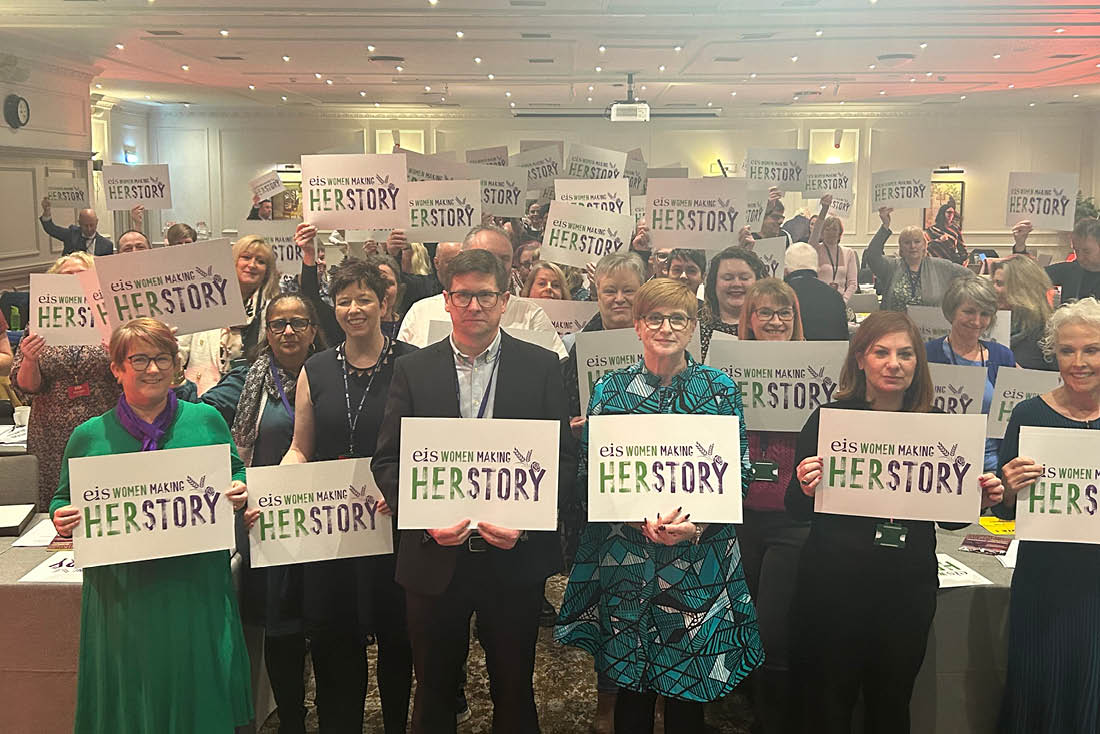
From campaigning for the right to wear trousers in the workplace, to winning equal pay for primary and secondary teachers, to defeating the Thatcher government’s pay policy – since the establishment of the EIS in 1847, EIS women have, and continue, to make ‘Herstory’. Beneath these headline wins, the big campaigns, the photos documenting our actions and the minutes showing when decisions were made, are the everyday experiences, struggles, and stories of EIS women.
For those who marched during the Value Education, Value Teachers campaign in 2018, the overwhelming feeling of so many on that day, was the strength of women standing shoulder to shoulder to demand better for their profession and the young people they teach. And the same was true of the women leading the dancing, the singing and the action on the picket lines during the Pay Attention campaign.
During the pandemic, one thousand EIS women joined their voices together and shared their experiences. The findings highlighted the differential impact of lockdown on women’s home and work-lives (in some respects even more so for disabled or Black, Asian and Minority Ethnic women) and marks an important testament to women’s resilience at that time.
Since then, the EIS has seen the election of its first woman General Secretary and continues to be a leading voice for gender equality in education, and the workplace.
As part of our ongoing Stand Up for Quality Education campaign, the EIS has shone a bright light on the unacceptable levels of violent and aggressive behaviour in schools, with 51% of branches responding that violence was more likely to be targeted against women teachers.
As part of our ongoing Stand Up for Quality Education campaign, the EIS has shone a bright light on the unacceptable levels of violent and aggressive behaviour in schools, with 51% of branches responding that violence was more likely to be targeted against women teachers. There can be no doubt that EIS women will continue to make Herstory as we jointly demand equitable and safe workplaces for all.
Too often, women’s stories go unrecorded. However, last years’ STUC Women’s Conference – Chaired by EIS General Secretary Andrea Bradley – set out to change that. The conference launched the STUC Herstory Project, developed to capture and highlight the stories of Scotland’s trade union women.
You can read some of the fantastic contributions thus far in the Herstory Project on the Herstory website.
For International Women’s Day 2024, we invited all EIS members to share a photo of themselves on social media, holding the EIS Women Making Herstory poster – and celebrate their own contributions to the legacy of EIS women!
To find out more about EIS women’s history, visit: www.eis.org.uk/equality/gender
